Transforming Tajikistan: Between a Soviet past and a Tajik future
As historic buildings are demolished, some residents of Dushanbe mourn lost memories while others embrace change.

Dushanbe, the capital of Tajikistan, is changing rapidly. In what was once a Soviet city known for its quiet tree-lined avenues, new highrise towers and grand administrative buildings are emerging. It is an extraordinary transformation taking place as Tajikistan reimagines what it means to be an independent Central Asian republic with its own national identity. But some residents are questioning the price at which it comes: the demolition of the city’s Soviet architecture and with it, the loss of childhood homes and memories to large-scale construction.
It is a topic debated on the pages of local newspapers, on social media and in local teahouses – pitting a shrinking but vocal class of Russian-speaking, middle-class natives of Soviet Dushanbe who oppose these changes as a targeted erasure of its history against the city’s Tajik-speaking majority, many of whom moved here from the countryside and view the changes in the capital as a sign of a nation coming into its own.
Keep reading
list of 4 itemsGeorgia’s historians fight against censorship of Soviet archives
Relations tense as Russian general leaves Prague post
My Soviet scar: Confronting architecture of oppression
Largely unheard between these two competing narratives, however, are the voices of the city’s youth. Born in Dushanbe after 1991, as Tajikistan was emerging as an independent country for the first time in its history, this generation is now caught between two visions of the city.
But, unlike their parents who were born and raised in Soviet Dushanbe and unlike the city’s Tajik-speaking – often non-native – majority, this young generation largely views the ongoing transformation of their city in more nuanced terms, considering it a natural, if chaotic, process for the young nation.
“In Tajikistan, we are still trying to figure out who we are culturally, who we are socially,” explains Anisa Sabiri, a 29-year-old independent filmmaker and poet from Dushanbe.
“We are observing the initial phase of this process in its rough form and that’s why [the architectural changes] might seem destructive and chaotic.”
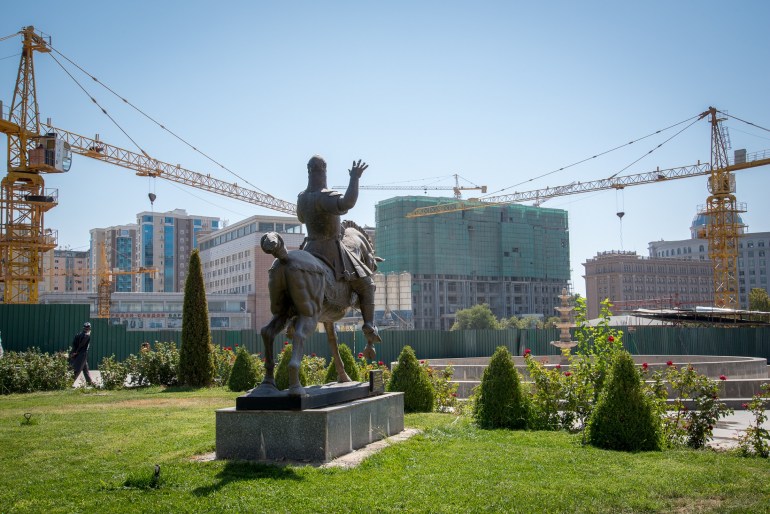
Demolishing Dushanbe
Initially one of the most prominent proponents of preserving the city’s Soviet past, Sabiri published a scathing op-ed in the local newspaper condemning the 2016 demolition of the Mayakovsky Theatre.
The low-key, utilitarian building that stood along the capital’s main avenue was built in Soviet constructivist style in 1924 and initially served as the House of Peasants. It was on its stage, on October 19, 1929, that the Tajik statesman Nusratullo Makhsum declared the creation of the Tajik Soviet Socialist Republic.
After Tajikistan gained independence in 1991, the building housed the most prolific and famed theatre troupe in the country and served as a hub for many of the city’s countercultural elements. During the five-year civil war that followed independence, as a number of competing regional and ideological factions struggled for power over the newly independent state, the Mayakovsky Theatre troupe entertained government forces on the front line. In the post-civil war years, the theatre served as one of the last remaining vestiges of Soviet culture in the city.
The city’s decision to raze the historic building ignited an unprecedented but fruitless public outcry. Despite pleas to preserve the building – from the theatre’s actors, on social media, and in petitions and open letters to the country’s authorities – the city went ahead with its demolition plans in the autumn of 2016.
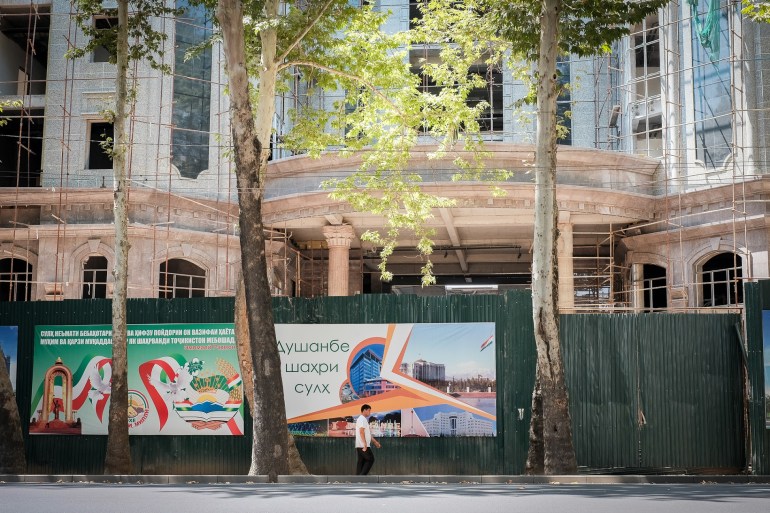
A string of high-profile demolitions soon followed across Dushanbe. There was the Jomi cinema, which when it was erected in the city’s main square in 1956 was one of only five panoramic cinemas in the Soviet Union. Then, in March 2017, the city administration building – built in the 1950s in a style that combined classical European and local architecture – fell. In October of the same year, the city tore down the lively Shohmansur market, colloquially known as the Green Bazaar, in the southeast corner of the city; its sellers who long attracted foreign tourists with colourful displays of fruit and spices and joyful haggling were forced to relocate to a much more formal setting. A year later, the city decided to tear down the Green Theatre, a 1933 building that in the 1940s had hosted theatre troupes evacuated from Leningrad and Moscow during the Nazi invasion; the building eventually came down last September.
With each demolition, the public outcry grew quieter as people lost hope of stopping the destruction. But it was reignited in February 2020 when the decision was made to raze the former presidential palace, which had once been the headquarters of the Tajik Communist Party. Built in 1957 to commemorate the 40th anniversary of the October Revolution, the almond-coloured neoclassical building – which had hosted international communist icons like Raul Castro and Ho Chi Minh and Soviet dignitaries such as Nikita Khrushchev, Leonid Brezhnev, and Boris Yeltsin – was perceived by many to be inextricably linked to the country’s history. Now, the historic building is being torn down to make space for a new, Chinese government-funded palace that will be the centrepiece of a new government complex.
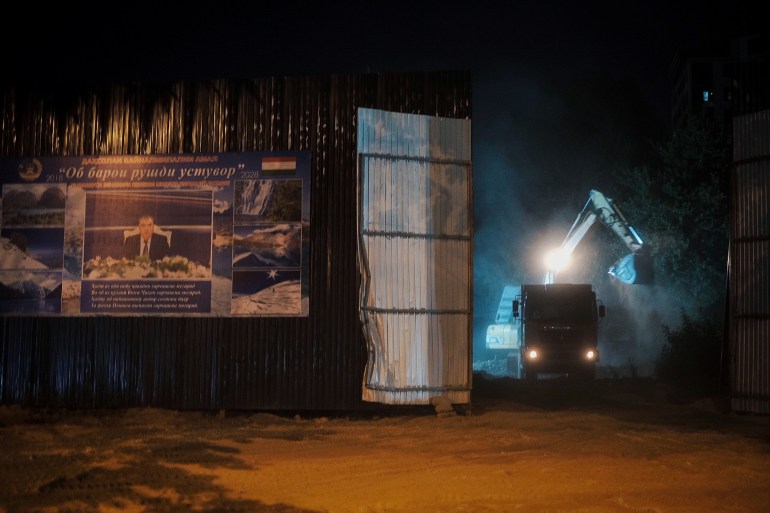
The Soviet past
“The initiators of this decision [to raze the former presidential palace] may want to get rid of the Soviet past. [But] getting rid of the Soviet past is ungrateful …,” Saidjafar Usmonzoda, the head of Tajikistan’s opposition Democratic Party, told the news agency Asia-Plus.
Historian, urban activist and prolific journalist Gafur Shermatov, whose Facebook post bidding farewell to the former presidential palace gathered hundreds of likes, shares, and sorrowful comments, agreed. “It is important to preserve what we already have, what came to us from our good Soviet past, something that contains history… But the buildings that have recently been considered monuments of architecture are simply being demolished and this indifference to our memories scares me,” Shermatov wrote on social media.
An active social media user, 60-year-old Shermatov is the most vocal voice in the narrative that views the recent string of high-profile demolitions as an erasure of Dushanbe’s Soviet history.
But those in favour of the changes argue that his perspective and those of others who oppose the demolitions reflect a longing for an idealised Soviet past in which Russian-speaking natives of the city held a more prominent cultural, economic and social role than ethnic Tajiks.
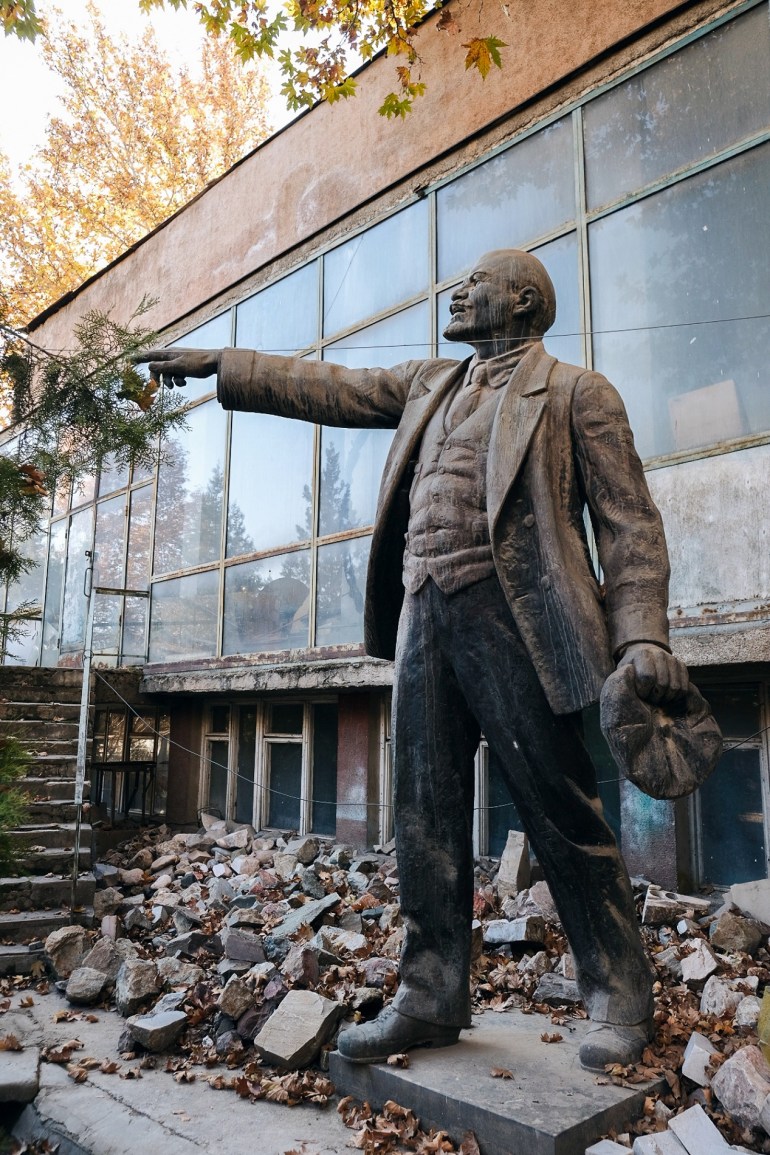
Since publishing her 2016 op-ed, Sabiri’s views have evolved. “I had always been on one side of this discussion – the side critical of the changes in the city. But lately, I am understanding that I cannot be the sole judge of the people who like these changes,” she reflects.
She has come to believe that there are issues of class and privilege at play in the debate. “The representatives of [the] intelligentsia, or perhaps of the Russian-speaking groups of population in general, view everything that has to do with the Tajik-speaking lifestyle as parochial, as underdeveloped. It’s time we started looking at it differently,” she says.
Aziza Kosimova, a 21-year-old social activist and prominent voice advocating for the preservation of historical buildings, explains that the majority of the city’s economically disadvantaged residents are simply not in a position to be too concerned about the fate of its historical buildings. “Look at the social hierarchy; our citizens have no time to think [about the city’s transformation] because one must have a better life first. They barely make enough money to get through today,” she says.
Sabiri and Kosimova believe a degree of social, cultural, and economic privilege is necessary even to participate in this debate and that such privilege is rooted in the country’s Soviet history. Everything in contemporary Tajikistan, from its roads to its hydropower plants and its capital – which before being declared capital of the newly-minted Autonomous Soviet Socialist Republic of Tajikistan in 1924 was a small village of approximately 6,000 people – was built by Soviet Moscow, which sent thousands of Russian engineers and architects to develop the country.
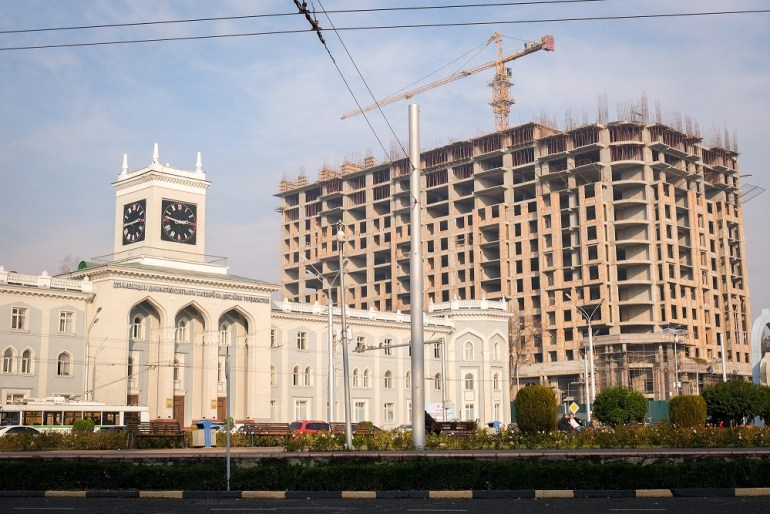
This infrastructural modernisation was coupled with a cultural and social process that pushed the Tajik language to the background, suppressed local religious and family practices, and emphasised the building of a new Soviet socialist nation at the expense of local nationalist sentiments. Over the years, the process created a Russian-speaking educated class of urban dwellers but marginalised rural residents of the country, creating a corresponding gulf in how residents view the Soviet era.
Kosimova reflects on her mother’s experience of travelling to the south of Tajikistan in the 1990s and her own recent similar experience of travelling across different regions of the country: “We live in a city with universities, buses, and hot tap water. But [rural] people had none of [those urban conveniences]. Thus, there is a huge gap in our perceptions of living environments.”
In the six decades after Dushanbe became the capital – undergoing a name change to Stalinabad in 1929 and reverting back in 1961 – it turned into a cosmopolitan city with a population that reflected the Soviet modernisation of the country. In 1989, only two-fifths of the city’s 600,000 residents were ethnic Tajiks; Russians comprised a third of the population, Uzbeks one-tenth, and Tatars, Ukrainians, and Jews – another 10 percent. Russian was the lingua franca of the city that also had large diasporas of Germans, Koreans, Ossetians, and Armenians.
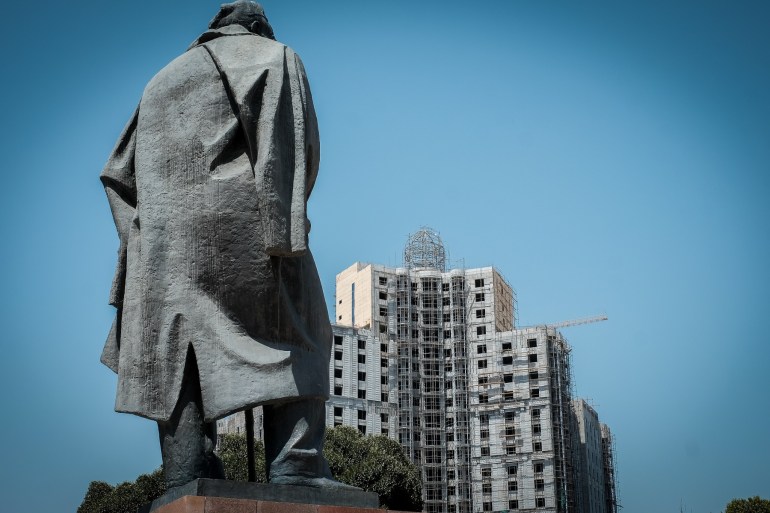
De-Sovietisation
The fall of the Soviet Union and the following civil war ignited a country-wide exodus of ethnic minorities and middle-class Tajiks. Today, almost 80 percent of Tajikistan’s population is ethnically Tajik. In a search for better economic and educational opportunities, predominantly Tajik rural populations are moving to Dushanbe. Amidst this inflow of rural residents and rising nationalism – with the Russian language losing its importance, Russified last names discouraged for ethnic Tajiks, and certain traditions and words outlawed for being too foreign – the diminishing class of Soviet Dushanbe natives may feel isolated and anxious about their place in contemporary Tajik society.
“The city is changing; old street names, homes, and courtyards are disappearing, and we can’t stop this process. But it’s important to remember those remarkable people of our Dushanbe as they are preserved in urban landscapes, buildings, events, traditions,” Shermatov told Asia-Plus.
Sabiri says she understands how painful these changes are to her parents’ generation, but that they are a natural process rooted in the decolonisation and de-Sovietisation of the country.
“In Tajikistan, like in many other former Soviet republics, there is a growing trend of returning to our own language. The feeling of shame for our nationality, for our identity, is disappearing,” she says.
“It is a search for identity, and it gets reflected in the city’s architecture… I personally don’t like the look of the new buildings but it’s just a matter of personal taste.”
Manzura Muinova, a 31-year-old architect and interior designer, agrees with Sabiri and calls Dushanbe “a city in progress”.
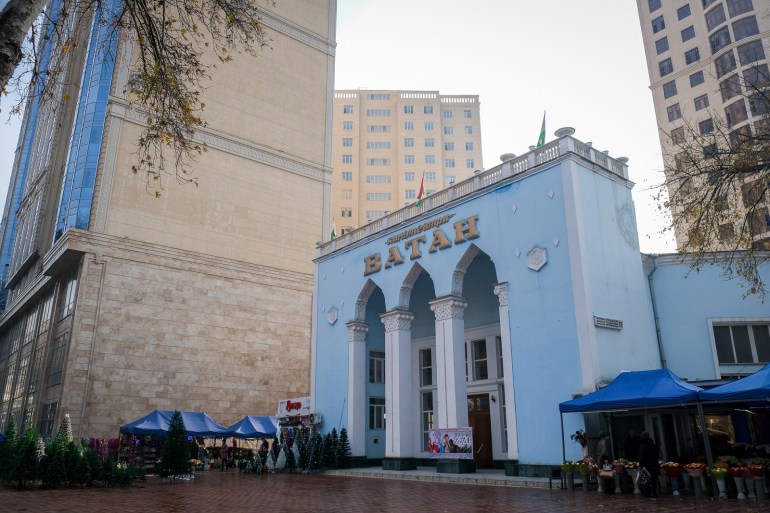
“I can’t say that it’s bad, it’s merely a creative search,” Muinova notes. “The Soviet architects who built Dushanbe were all graduates of the Leningrad architecture school. Their work followed one general trend and there were standards. The current transformation is eclectic and is a search process.”
Most of Soviet Dushanbe was designed by Stefan Lukic Anisimov, a graduate of the Leningrad architecture school who was appointed as one of the chief architects of the Tajik Socialist Soviet Republic in 1936 and worked in Dushanbe for almost 50 years until his death. The buildings that gave Soviet Dushanbe its signature neoclassical look – the headquarters of the Tajik Communist Party, the Firdavsi National Library, the National Bank of Tajikistan, the Ministry of Finance building, the current parliament building, among others – were all Anisimov’s creations and reflected the stylistically unitary and centrally planned way in which the Soviets approached urban development.
Now Dushanbe’s redevelopment, despite the existence of a general plan, seemingly doesn’t follow any order or style – something that both older and younger residents decry. The growing number of highrises with glass facades invokes comparisons with China’s fast-growing cities and with Dubai, a point of pride for the Tajik-speaking residents of the city who often see the United Arab Emirates as the model for development.
“This construction boom makes me think of a teenager who is trying everything on while searching for their own style,” Muinova concludes.
Sabiri agrees. “I don’t think these [architectural styles used in the new buildings] are Tajik. I think again it’s the issue of not knowing yet what is ours, what is Tajik,” she reflects.
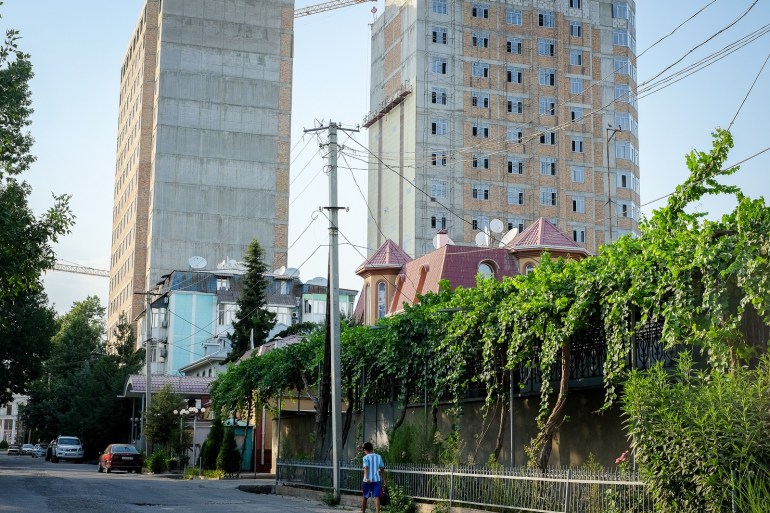
Saying ‘goodbye’
Regardless of the accuracy of the comparisons to Urumqi or Dubai, the city’s ongoing transformation arguably reflects a geopolitical and cultural power shift in the country that no longer looks at Moscow and Saint Petersburg as role models but at China and the Gulf states as Beijing and Riyadh fund infrastructure projects in Tajikistan.
“I don’t know about the ideological underpinnings [of the construction boom] but I think one motivation is money,” says Timur Temirkhanov, a 25-year-old journalist from Dushanbe. “They don’t care how the new buildings look. All that matters is to build it to get money out of it.”
Kosimova voices the same concern, saying: “Why is there no system? Because it’s all about profiting.”
In 2019, the apartment building Kosimova grew up in was slated for demolition. The inconspicuous four-storey building was a prime example of a khrushchyovka – low-cost, concrete-panelled or brick apartment buildings developed all over the Soviet Union during the early 1960s. Grieving over the loss of her childhood home and wanting to attract civil society’s attention to the plight of families who were losing their apartments, Kosimova set out to learn more about the city’s construction permits process and discovered a decentralised system with ambiguous and ever-shifting rules.
“There’s no [proper permits] system controlling these private [contractors] because they pour millions of somoni into the government budget. And the construction goes on. We’re building new Dubai and it’s all dandy,” Kosimova laments.
Neither the Department of Architecture and Urban Development of Dushanbe nor the Committee for Architecture and Construction under the Government of Tajikistan responded to a request for comment for this article.
Over the past five years, some residents of the central districts of Dushanbe have been experiencing forced displacement from homes that were destined for demolition and redevelopment. While some residents have been able to negotiate decent deals with the developers, most have had to accept unfavourable terms.
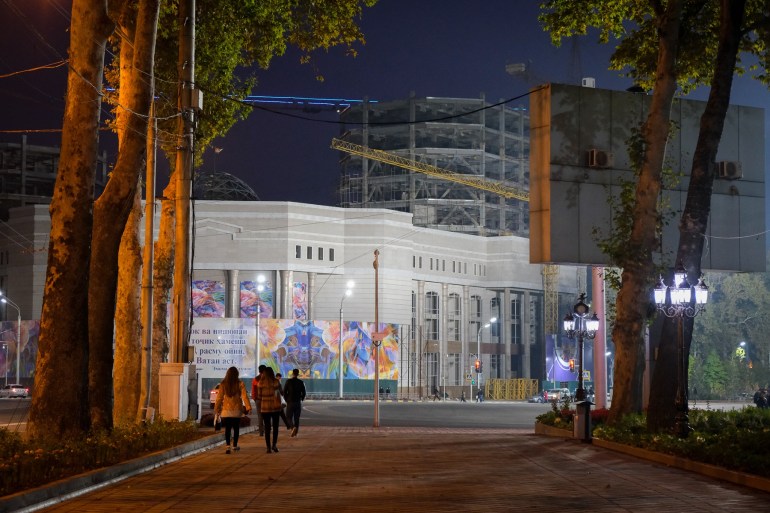
The case of the apartment building at 49 Bukhoro Street is a good illustration of these trends: Erected by renowned constructivist Soviet architect Pyotr Vaulin during the Stalin era, it was the first three-storey building in Dushanbe and had always housed some of the city’s most well-known residents like the Communist Party of Soviet Tajikistan’s First Secretary Dmitry Protopopov and Dmitry Bilibin, the architect of the Opera and Ballet Theatre and the head of the Architecture Bureau. Because of its prime location – just a block east of the city’s main avenue and right across from one of the country’s best universities – the building became a target for redevelopment. The residents suffered through a years-long legal battle, targeted electricity blackouts, and other forms of harassment. Despite the publicity around the case, the residents ultimately lost the building in February 2021. It is currently being demolished.
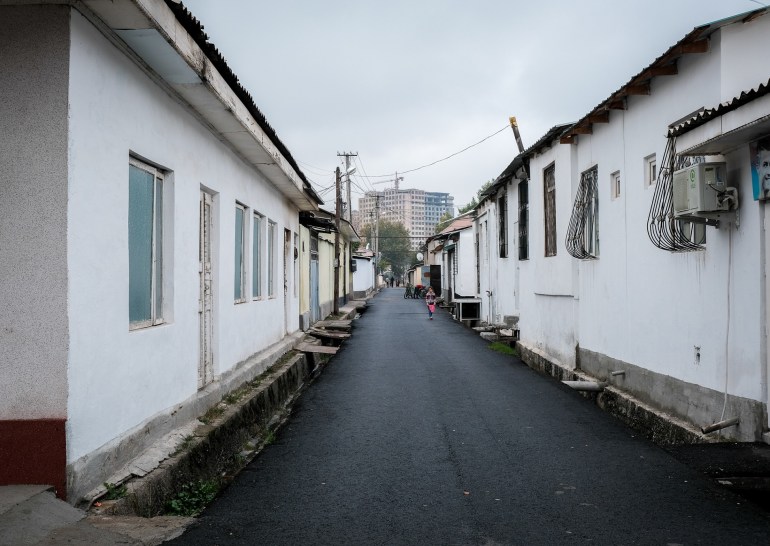
“In 10 years, the city centre will be completely rebuilt with new glass buildings, hotels, business centres, and the old historic buildings will be fully demolished because they represent no monetary value,” says Temirkhanov. “After the city centre reaches its construction capacity, development will spread to the city peripheries as the land price on the outskirts will start to increase.”
To make sense of the changes in her rapidly evolving hometown, Kosimova turned to social media. Her project, Youth in Dushanbe, aims to educate young people about the history and culture of Dushanbe. Most of Kosimova’s work focuses on the city’s last remaining iconic Soviet buildings, like the 1929 powder-blue Lohuti Theatre – Soviet Tajikistan’s first theatre – and the Rohat Teahouse, a 1958 building which W Averell Harriman, John F Kennedy’s assistant secretary of state, called “the most original teahouse in the world” during his 1959 visit.
“Youth in Dushanbe is my way to say goodbye to the city [of my youth],” Kosimova explains. “I will finish the project, I will preserve the city. It’s a closure, a ritual for me.”